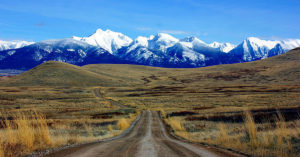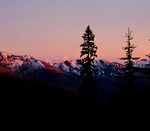Douglas Fir Technical Data
Posted: November 12, 2011Douglas Fir Timber Properties: Wood Strength and More
- Description: Douglas Fir has the highest strength-to-weight ratio of any wood species. Primarily found in the western US and Canada, Douglas Fir is frequently used for structural dimension lumber and for interior finish work in upper grades. Douglas Fir clears are renowned for their strength, durability, and ability to stand up to the elements. In addition to its strength, Douglas Fir has rich coloring with the heartwood aging to a dark tan-red color and the sapwood remaining light tan. Vertical grain, clear Douglas Fir is widely considered to be one of the finest materials available for trim, mouldings, doors, flooring, windows, exposed beams, ceilings, and paneling. Douglas Fir CVG flooring has been used throughout the US since the 1800s and is often found in classic historic homes.
- Janka Hardness: 710 pounds
- Strength (MOR): 12,400 psi
- Stiffness (MOE): 1,950 1000 psi
- Density (KG/m3): 530
- Tangential Shrinkage: 7.6 %
- Radial Shrinkage: 4.8 %
The Douglas Fir is an evergreen tree that is native to Western North America, including Canada, the United States, and Mexico. Douglas Firs are not “true” firs, despite their common name, and have gone through many different scientific classifications until, ultimately, they were given their own genus name Pseudotsuga menziesii. Other common names for Douglas Fir are numerous but include alpine hemlock, black fir, Douglas pine, Douglas spruce, gray Douglas, green Douglas, Hallarin, Montana Fir, and Oregon pine among others.
There are two different species that occur in North America; the Coastal Douglas Fir, which extends from central British Columbia to northern California, and the Rocky Mountain Douglas Fir, which is found further inland in states such as Montana, Idaho, Utah, and Wyoming and their surrounding areas.
Douglas Firs generally grow to heights between 40 and 60 feet into an upright conical shape, with the base growth reaching widths of 15-25 feet. In the Pacific Northwest, where this tree is native, Douglas Fir heights of over 200 feet are common. The hardiness of these trees also varies depending on where they are grown. Rocky Mountain Douglas Fir has to withstand extreme environmental conditions, for this reason even after being harvested it makes some of the hardiest logs and lumber on the market.
The oldest accurately-dated Rocky Mountain Douglas-fir, 1275 years old, is in New Mexico. This longevity is apparently uncommon; growing on a relatively barren lava field has protected it from fire, animals, and humans. Growth typically slows dramatically between 90 and 140 years of age.
Rocky Mountain Douglas Fir, aka Montana Fir

Rocky Mountain Douglas-fir grows more slowly than Coast Douglas-fir and is much colder tolerant. Its presence in variable habitats is due to genetic differentiation rather than ecological amplitude. Variations with respect to the tolerance of different environmental conditions are easily detected. Differences in cold-hardiness have been observed between northern Idaho populations and northwestern Montana populations.
Rocky Mountain Douglas-fir grows on a variety of sites across its wide geographic range. It grows at lower elevations adjacent to and within bunchgrass communities and is also found in upper-elevation subalpine forests. It tends to be most abundant in low- and middle-elevation forests, where it grows over a wide range of aspects, slopes, landforms, and soils.
In spring and winter (in British Columbia, Idaho, and Montana) elk browse on the south- and southwest-facing Rocky Mountain Douglas-fir and Ponderosa pine stand, particularly when shrubs and/or grasses are productive. In summer, Elk generally are found at higher elevations (outside the Rocky Mountain Douglas-fir and Pacific Ponderosa Pine zones). During fall Elk use stands of Rocky Mountain Lodgepole Pine, Subalpine Fir, Western Larch, or Grand Fir with high canopy cover.
In parts of Yellowstone National Park, Elk browsing is so intensive that young Rocky Mountain Douglas-fir is stunted at 1–1.5 m (3–4.5 feet) in height, with live branches trailing very close to the ground, and branches on the upper two-thirds of the tree dead. Low-elevation and south-facing open-structure Rocky Mountain Douglas-fir types are often important winter ranges for White-tailed Deer and Mule Deer. Moose winter in low-elevation Rocky Mountain Douglas-fir types in areas where willow thickets, the preferred winter habitat, are lacking; in such areas, Rocky Mountain Douglas-fir is an important moose food.
Rocky Mountain Douglas Fir Flooring

If you’re in the market for hardwood floors, it’s time to take a closer look at Douglas Fir Flooring.
Our knowledgeable and educated staff is here to answer any additional questions you may have. Please call us today for a free quote: Ph# 406.642.7120 or click here to submit an inquiry online. We look forward to working with you on your next project!

